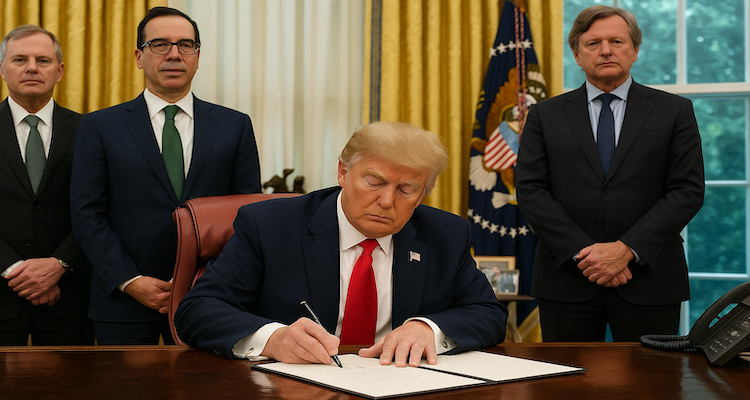NASA Astronauts’ Long-Awaited Return: SpaceX Crew-10 Mission Explained
Discover how NASA and SpaceX’s Crew-10 mission will bring astronauts Butch Wilmore and Suni Williams home after nine months on the ISS. A tale of resilience and teamwork.
NASA Astronauts’ Long-Awaited Return: A Journey Beyond the Stars
On Friday, March 14, 2025, a plume of fire and ambition roared into the night sky above Florida’s Kennedy Space Center. At precisely 7:03 p.m. ET, SpaceX’s Falcon 9 rocket pierced the atmosphere, ferrying four astronauts toward the International Space Station (ISS). This wasn’t just another launch—it marked the beginning of the end for a saga that’s gripped the nation for nearly a year. NASA veterans Butch Wilmore and Suni Williams, stranded in orbit since June 2024, are finally on the cusp of coming home, thanks to the Crew-10 mission. Their story is one of resilience, unexpected twists, and a touch of political theater, woven into the fabric of America’s spacefaring legacy.
A Mission That Took an Unexpected Turn
When Wilmore and Williams strapped into Boeing’s Starliner capsule last summer, the plan was straightforward: a quick eight-day test flight to the ISS, a milestone for NASA’s Commercial Crew Program. As retired U.S. Navy test pilots and seasoned astronauts, they were no strangers to high-stakes missions. But space has a way of defying even the best-laid plans. Shortly after docking with the ISS, the Starliner revealed its flaws—helium leaks and thruster malfunctions that rendered it too risky for a crewed return. NASA made the call: send the capsule back empty and leave the duo in orbit.
What began as a brief jaunt morphed into a nine-month odyssey. Integrated into the ISS’s Expedition 72 crew, Wilmore and Williams adapted with the grit of true pioneers. Williams even took command of the station in September, overseeing experiments and spacewalks alongside their colleagues. “We came prepared to stay long, even though we planned to stay short,” Wilmore said during a recent orbital press conference, his voice steady with the calm of someone who’s faced the unknown before. Together, they’ve logged over 900 hours of research, proving that adaptability is as vital as any rocket booster.
Crew-10: The Rescue That Wasn’t a Rescue
Enter SpaceX’s Crew-10 mission, launched on March 14, 2025. The Falcon 9 carried NASA astronauts Anne McClain and Nichole Ayers, Japan’s Takuya Onishi, and Russia’s Kirill Peskov into orbit, tasked with relieving the current ISS crew. After docking on Saturday, March 15, at 11:30 p.m. ET, this quartet will spend roughly six months aboard the station. But their arrival sets the stage for Wilmore and Williams’ departure, scheduled for March 19, alongside NASA’s Nick Hague and Russia’s Aleksandr Gorbunov, who arrived in September on a Crew Dragon with two empty seats reserved for the stranded pair.
Moments after reaching orbit, McClain, a veteran of NASA’s 2013 astronaut class, introduced the mission’s microgravity indicator—a plush origami crane, symbolizing peace and hope. “Spaceflight is hard,” she said over NASA’s livestream, her words crackling with purpose. “Success depends on leaders who choose the harder right over the easier wrong.” Her sentiment echoed the collaborative spirit of the mission, a partnership spanning nations and agencies, all united to keep the ISS humming—and to bring two astronauts home.
The Political Firestorm: Trump, Musk, and the “Stranded” Narrative
This otherwise routine crew rotation took on an unexpected edge, fueled by voices from the highest echelons of power. President Donald Trump and SpaceX CEO Elon Musk thrust the mission into the spotlight, alleging—without evidence—that the Biden administration had abandoned Wilmore and Williams for political gain. “Biden was embarrassed by what happened, and he said, ‘Leave them up there,’” Trump claimed during a March 6 Oval Office briefing. Musk, a close Trump adviser, doubled down, asserting he’d offered an earlier rescue that was rebuffed.
Their rhetoric painted a dramatic picture of two astronauts left to drift in the cosmos, a narrative that gained traction online. Posts on X amplified the claims, with some users accusing NASA of playing politics with American lives. Yet Wilmore and Williams themselves pushed back. “We don’t feel abandoned, stuck, or stranded,” Wilmore told reporters on March 4, dismissing the notion that their extended stay was a political pawn. “That’s what your nation’s human spaceflight program is all about—planning for the unexpected.”
NASA officials echoed this, emphasizing practical realities over conspiracy. Steve Stich, manager of the Commercial Crew Program, explained that maintaining ISS staffing levels was paramount, and a dedicated rescue mission wasn’t feasible given budget constraints and operational priorities. Ken Bowersox, NASA’s space operations chief, added that the agency had been working with SpaceX since mid-2024 to orchestrate this return, well before Trump and Musk’s public outcry. The Crew-10 launch was even bumped up from March 26 after swapping out a delayed SpaceX capsule—a move driven by logistics, not political pressure.
Behind the Scenes: A Tale of Teamwork and Tenacity
Preparing Crew-10 wasn’t without its hurdles. Stich described the process as an “unusual flow,” marked by late-breaking challenges like a fuel leak from a recent Falcon 9 launch and thruster coating issues on the Crew Dragon. NASA, often seen as the methodical giant to SpaceX’s nimble innovator, had to hustle to keep pace. “We’re not quite as agile as they are,” Bowersox admitted, “but we’re working well together.”
For Wilmore and Williams, the wait has been a test of endurance and optimism. Williams, speaking from the ISS earlier this month, shared a rare glimpse of her personal stakes. “I’m looking forward to seeing my two dogs and family,” she said, her tone softening. “It’s been a roller coaster for them, probably more than for us.” Her words humanized a mission often reduced to headlines, reminding us that even astronauts—trained to thrive in the void—yearn for the familiar comforts of Earth.
Space Exploration in the Spotlight: What It Means for the Future
The saga of Wilmore and Williams underscores broader truths about space exploration. A 2023 study by the National Academies of Sciences highlighted that unexpected delays are par for the course in human spaceflight, with contingency planning baked into every mission. Yet their story also spotlights the rivalry between Boeing and SpaceX, two pillars of NASA’s commercial crew efforts. While SpaceX has notched over 300 successful Falcon 9 flights since 2010, Boeing’s Starliner stumbled, leaving NASA to lean on its rival to close the gap.
This isn’t just about one mission—it’s a window into America’s space ambitions. The ISS, a marvel of international cooperation, relies on seamless crew rotations to sustain its scientific output, which includes everything from studying microgravity’s effects on the human body to testing technologies for future Mars missions. In 2024 alone, the station hosted over 200 experiments, many aided by Wilmore and Williams’ extended stay. Their resilience mirrors the program’s ethos: when the unexpected strikes, you adapt and keep pushing forward.
Voices of Experience: What Experts Say
Former NASA astronaut Scott Kelly, who spent a year aboard the ISS, weighed in on the situation. “These are highly trained professionals,” he told NPR in early March. “They’re not stranded—they’re doing their jobs.” Kelly’s perspective cuts through the noise, framing the delay as a testament to astronaut preparedness rather than a failure of leadership. Meanwhile, space policy expert Laura Forczyk of Astralytical noted that political meddling in NASA operations is rare but not unprecedented. “Trump and Musk’s comments reflect frustration more than fact,” she said, pointing to NASA’s transparent decision-making process as evidence.
Looking Ahead: A Homecoming on the Horizon
As Crew-10 settles into their six-month stint, all eyes turn to March 19, when Wilmore, Williams, Hague, and Gorbunov are slated to splash down off Florida’s coast aboard the Crew Dragon. For Wilmore and Williams, it’ll mark the end of a journey that tested their mettle and captivated a nation. Their return won’t just close a chapter—it’ll reaffirm the grit and collaboration driving humanity’s reach for the stars.
So what’s the takeaway? Spaceflight isn’t a straight line; it’s a dance with the unpredictable. Whether you’re an astronaut weathering months in orbit or a reader marveling at their tale, the lesson is clear: progress demands patience, partnership, and a willingness to face the unknown head-on. As Williams prepares to reunite with her dogs and Wilmore reflects on a mission well-executed, their story leaves us with a question: What frontiers will we conquer next, and who will rise to meet them?
For more on NASA’s missions, visit NASA’s official site or explore SpaceX’s latest updates at SpaceX.com.
Source: (Reuters)
(Disclaimer: This article is based on publicly available information as of March 15, 2025, and reflects the latest updates on the Crew-10 mission and the return of astronauts Butch Wilmore and Suni Williams. It aims to inform and engage readers with a journalistic perspective, drawing from credible sources and expert insights. Opinions expressed are those of the author and do not necessarily reflect the views of NASA, SpaceX, or other entities mentioned.)
Also Read: Sunita Williams’ ISS Delay: NASA Sets March 19 Return











